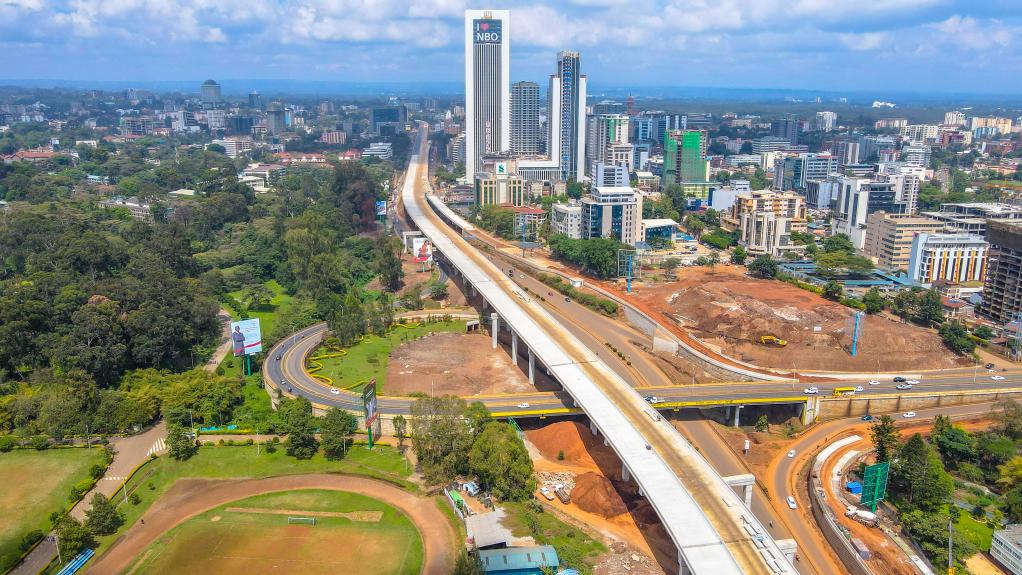Chinese-built Expressway unleashes new opportunities in Kenya
 0 Comment(s)
0 Comment(s) Print
Print E-mail Xinhua, June 12, 2022
E-mail Xinhua, June 12, 2022

At the busy bus terminus in Kitengela, a residential and commercial suburb on the southern edge of Kenya's capital, Nairobi, commuters formed two queues on Friday morning, waiting to board buses.
One queue was short, the other longer, and the cause of this was apparent. For the longer queue, the commuters were waiting to board a bus that uses the newly Chinese-built Nairobi Expressway.
It is a new route that operators of commuter buses, commonly known as matatus in Kenya, are cashing in on.
The road, which was opened for usage last month on a trial basis, has not only brought new opportunities to the matatu operators but has also changed the commuting experience for Kenyans who live in residential areas south of Nairobi.
The road has made commuting an enjoyable experience, noted Brian Mureithi, a resident of Kitengela, who works for a bank in the central business district.
Before the road was built, Mureithi would leave the suburb by 5:45 a.m. every morning to make it to the office by 8 a.m. local time.
"It would take me about two hours to reach the office due to heavy traffic on Mombasa Road. Sometimes I would choose to use the train to avoid sitting in traffic for a long time but this would come with additional costs," he recounted.
The opening of the Expressway has done away with such negative experiences.
"I now leave Kitengela at 6:30 a.m. aboard a bus that uses the Expressway and I am in the office by 7.30 a.m.," he said, noting that for the new experience, he only adds 50 shillings (0.42 U.S. dollars) on top of the 0.82 dollars matatus using the old road charge to and from the suburb.
Caroline Achieng, who lives in Athi River, some 30km south of the capital, said it no longer feels far to commute from the suburb to the city center.
"It now takes me some 45 minutes from Athi River to the city center instead of two hours. The bulk of the time is actually spent on the lower road when one exits the Expressway to enter the city center. This is fresh; it's exciting," she said.
Super Metro, one of the matatu saccos operating in Nairobi, is among those that have started new routes, following the opening of the Expressway.
The sacco was the first to launch the City Center-Kitengela route via the Expressway. At least four others, including Rembo Shuttle and Rembo Classic, have followed suit.
"We saw an opportunity immediately when the road was opened and seized it. The route has become a hit in less than two weeks," said George Kariuki, a conductor with the sacco. The firm charges 1.27 dollars to and from the City Center and Kitengela via the Expressway.
The use of the Expressway, according to him, has translated into more business during peak hours because of less time spent to reach the destination.
"Instead of two trips maximum in morning and evening peak hours, one makes three or four. I thank the Chinese and the Kenyan government for building the road. This is what Kenya needs to develop," said Kariuki.
But it is not only commuters and matatu operators enjoying the Expressway, those using private cars too are also relishing the experience as they spend less time in traffic.
"Instead of burning two or three liters of fuel in traffic during peak hours, I better pay the 2.55 U.S. dollars fee to use the road from Mlolongo to Westlands where I work and spend 30 minutes on the road instead of three hours. I can now drive to work," said Brian Wesonga, an employee of a telecommunication company.
The Kenyan government in collaboration with the China Road and Bridge Corporation (CRBC) built the 27.1 km road under a public-private partnership (PPP) model. According to James Macharia, Kenya's cabinet secretary at the Ministry of Transport, Infrastructure, Housing and Urban Development, the Expressway is the first road to be built under the PPP model in the country.
The road was, therefore, not financed through public debt or government funds, the Chinese firm built it and would operate it and later hand it to the government, he said recently.
"Over the last two weeks, we can say that its usage has been a success by the number of vehicles that we see there, at least 30,000 vehicles use it daily," said Macharia.
The toll road is the first double-decker road in the region and has been hailed as a game-changer in urban mobility. During its construction, which happened in record time, at least 4,000 Kenyan workers were employed by the project, according to the Kenya National Highways Authority.






Go to Forum >>0 Comment(s)